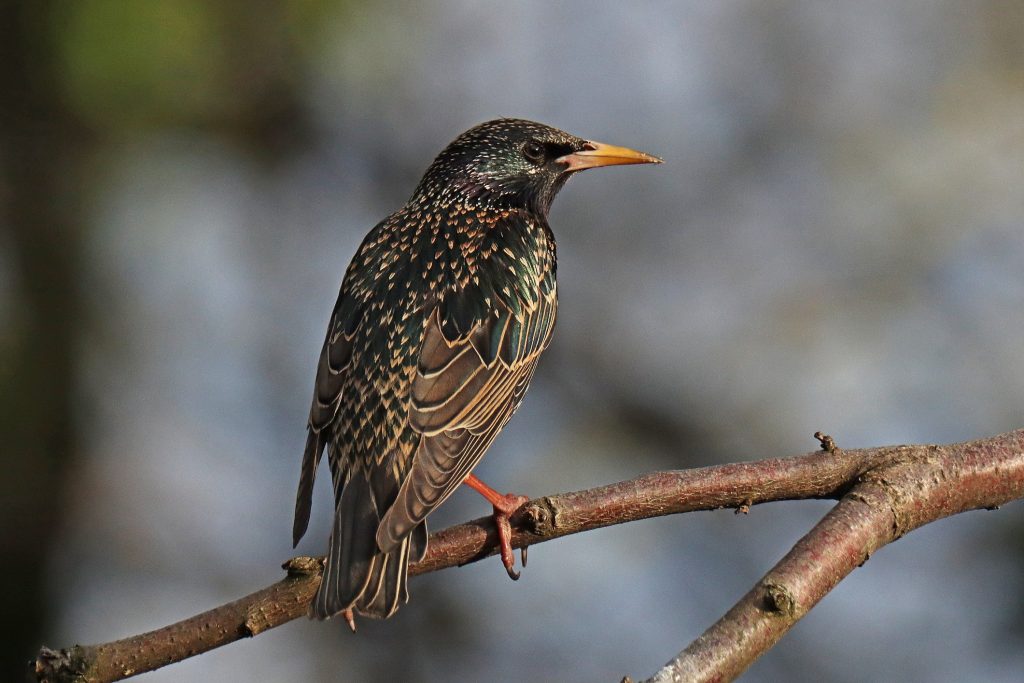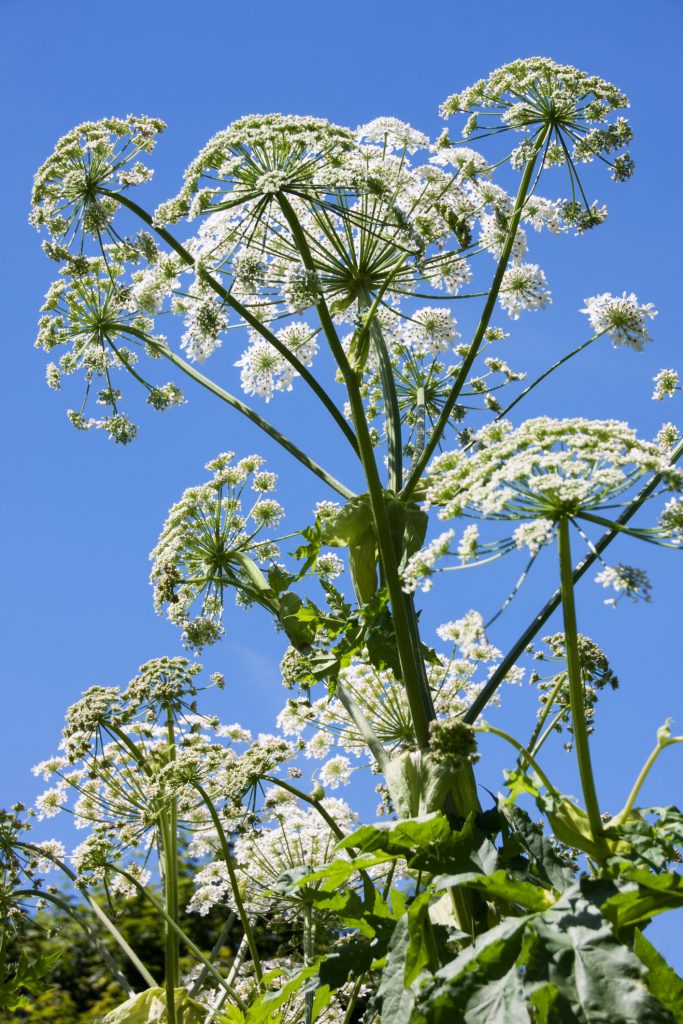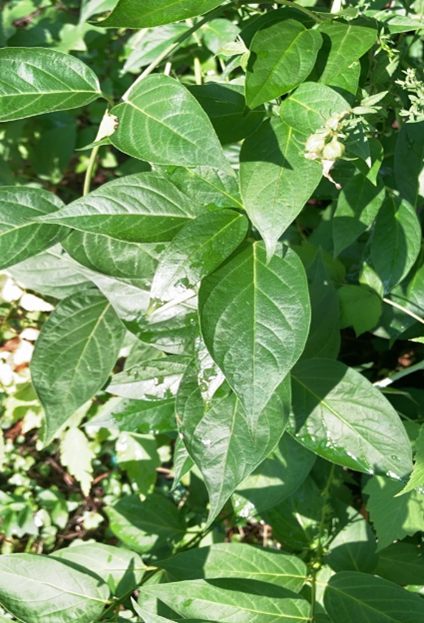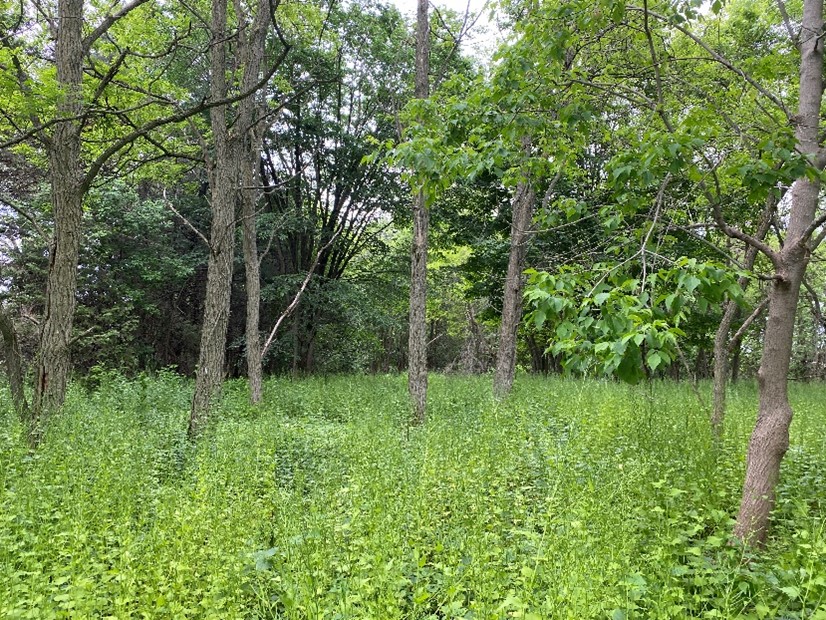Written by Kennedy Hanczyk, Project Biologist, Environmental Science Group, Pinchin Ltd.
National Invasive Species Awareness Week 2024, observed from February 26th to March 4th, serves as an important reminder of the threat invasive species pose on our planet’s delicate biodiversity. Invasive species largely threaten ecosystems due to their ability to outcompete, displace, and disrupt native flora and fauna. Efforts to control and manage invasive species are crucial for preserving biodiversity and maintaining ecosystem stability.
The rich diversity of Canada’s landscapes, ranging from forests to wetlands, lakes, and oceans serves as habitat for various native plant species. This diverse group of plants evolved together, adapting to local climate and soil conditions to create stable natural communities known as ecosystems. There are many invasive species in Ontario that have infiltrated our ecosystems, such as Dog Strangling Vine (Vincetoxicum nigrum), Garlic Mustard (Alliaria petiolata), Spotted Knapweed (Centaurea stoebe), Canada Thistle (Cirsium arvense), Eurasian water milfoil (Myriophyllum spicatum), Common Buckthorn (Rhamnus cathartica), Giant Hogweed (Heracleum mantegazzianum), and Common Reed (Phragmites australis). The Invasive Species Centre Best Management Practices Database provides resources for invasive species across Canada including identification, removal, and pathways of spread.
Preventing the Spread: Identifying and Managing Invasive Species
Invasive species can enter our ecosystems through a number of different pathways such as boating, horticulture, pet release, trail use, and the movement of wood and soil. One way to help prevent the spread of invasive species is by identifying what they look like. Giant Hogweed is most infamously known for the sap it produces which results in a severe reaction if it comes in contact with an individual’s skin. Giant Hogweed can be identified by its small white flowers and hairy stem which is able to grow over 3 m tall. However, invasive species are not solely limited to plant species.
There are several invasive fauna species in Canada most notably European Starlings (Sturnus vulgaris), Zebra Mussels (Dreissena polymorpha), Spongy Moth (Lymantria dispar dispar), Goldfish (Carassius auratus), and Round Goby’s (Neogobius melanostomus). The European Starling is considered an invasive species in varying parts of North America due to its rapid spread and negative ecological impacts on native bird populations. European Starlings are most recognizable by their dark black glossy feathers and noisy flock calls.



How Pinchin Helps: Mitigating Invasive Species
Pinchin’s Environmental Science (ENS) Group collaborates with clients on private and public development projects to develop invasive species management programs as feasible and proactive solutions aimed at mitigating the impact of invasive species within their ecosystem. A practical illustration of Pinchin’s commitment to ecological restoration can be found at a site in Halton Hills, Ontario. The site’s natural heritage features adjacent to a major watercourse include wetlands, meadows, and woodlands that contained several invasive species.
One of Pinchin’s primary methodologies to balance development with environment included the creation of a Restoration Planting Plan for the panting of native species and the removal on invasive species on the site that proposed enhancing the disturbed patch of wetland on the Site by removing invasive species and replanting native wetland species to improve the ecological value of the area for an ecological net gain.


Taking Action to Prevent Invasive Species
National Invasive Species Awareness Week highlights the important role individuals play in protecting the natural habitats from the encroachment of invasive species. Some ways that individuals can help to prevent the spread of invasive species in their communities includes removing invasive plants from your gardens and planting native species, washing mud off your shoes before moving between locations, not releasing aquarium fish into the wild, and following the Clean-Drain-Dry steps when using watercraft and fishing gear. As we navigate this awareness week, it becomes an opportunity for individuals to learn about and prevent the spread of invasive species.